This might come as a surprise, but the amazing pipe tomahawk in these photos isn’t from a museum collection. It also wasn’t made 255 years ago. It was made this year, exactly like it would have been made 255 years ago, by three artists in the Contemporary Longrifle Association.
The tomahawk is as uniquely an American weapon as the Pennsylvania long rifle. In both cases, European settlers in the new world adapted existing weapons to their particularly American needs. Prior to contact with Europeans, the native Indians of the Northern Americas had no knowledge of iron. Instead, they worked with tools of stone, wood, shell, and bone. European bronze, iron, and steel implements (knives, axes, saws, hoes, needles, fish hooks, and guns) were very valuable trade goods. The metal tomahawk as we recognize it today was a popular weapon with European frontiersmen and Indians alike. However, it first emerged specifically as an Indian trade item.
Unlike European hand axes and hatchets, which were primarily tools for cutting wood, Indian tomahawks were primarily fighting tools. As such, they were quite small and light with long handles. Most metal trade tomahawks—and in fact, most all goods intended for bartering with the Indians—were imported to the British and French colonies in North America. They were efficiently mass-produced in European factories and made comparatively cheaply.
From the perspective of most Indians, any metal blade was superior to a stone one, so these tools were immediately and immensely popular. As long as metal items were high-value trade goods, it was certainly not in the interest of the colonists to freely share the knowledge of how to work hot iron and steel with the Indians. Also, for reasons of their own, of which there were many, the Indians were not particularly desirous to learn or pursue blacksmithing.
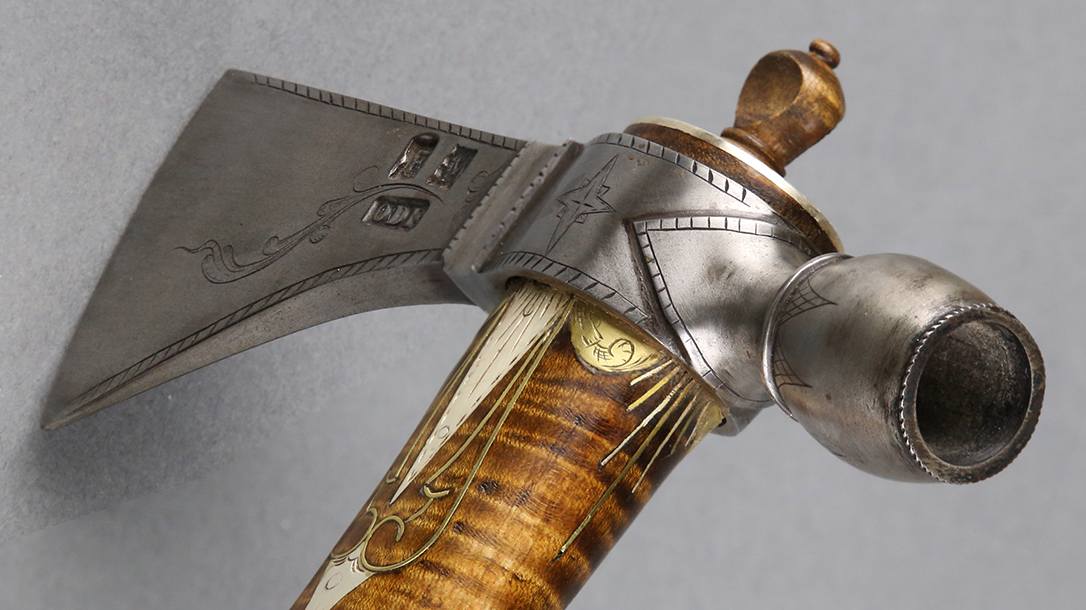
Uses and Value
Prior to 1763, most tomahawks were the poll-end type. They featured a stubby, flat, hammer-like head opposite the blade. It served as a light hammer or to deliver a less-lethal blow in combat. On the occasion of his capture by hostile Indians, the famous frontiersman Simon Kenton, a contemporary of Daniel Boone, was incapacitated when hit in the head with the poll end of a tomahawk. It punched a circular hole through his skull! Miraculously, he survived the injury. The tribe adopted him and he later left on good terms.
In most cultures, the quality, beauty, and expense of one’s material possessions serve as a visible indication of the bearer’s social status. In 18th century North America, European colonists understood that a finely wrought and decorated sword was the weapon of an important military leader, not a common soldier. Likewise, the various tribes of their American Indian neighbors recognized that a finely wrought and decorated tomahawk was not the weapon of a common warrior.
The CLA tomahawk in this article typifies the exceptional craftsmanship of the expensive, presentation-level pieces that were usually intended as diplomatic gifts for Indian chiefs or awards for respected gentleman officers in colonial service. The quality of the work is as high as the finest examples, the latter pieces simply having more decoration. Although perfectly deadly, this tomahawk is also a pipe for smoking tobacco. It has a hollow bowl end and a hole drilled through the handle to draw the smoke through. The 0.1875-inch hole through the length of the handle does not diminish its utility as a weapon so much as the highly figured wood itself.
Smoke ‘Em if You Got ‘Em
From what can be drawn from the limited number of surviving written records and actual pipe tomahawks still in existence, these dual-purpose tomahawks began to appear in significant numbers after 1763 and the conclusion of the French and Indian War. They became increasingly popular as trade items through the Revolutionary War era when various ambitious adventurers, businessmen, royal officials, and later the newly formed state and Confederation governments sought treaties with the Indians. Lewis and Clark took 50 fine pipe tomahawks with them on their three-year exploratory expedition that began in 1803.
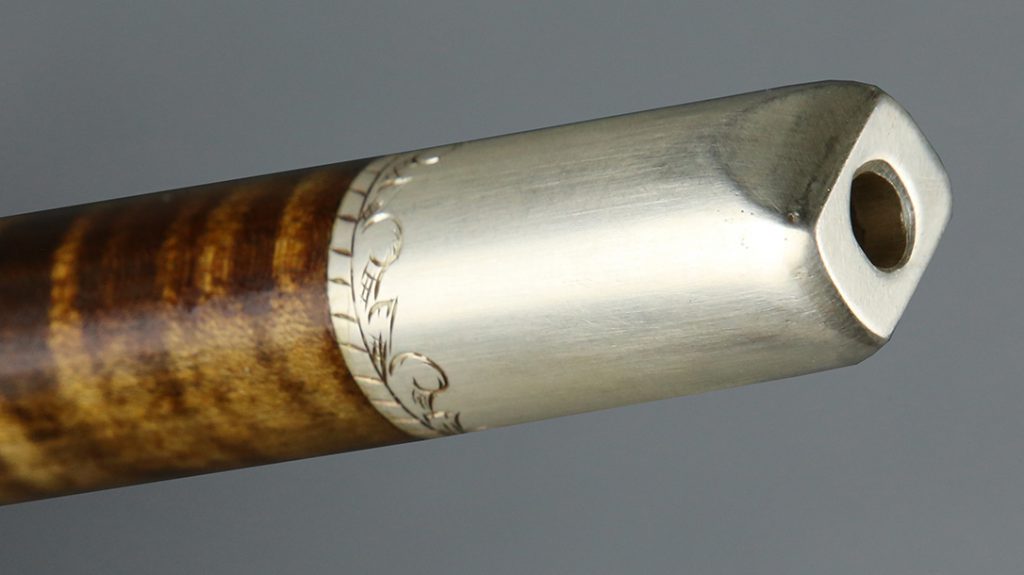
As historically notable as they are, the exact origin of the pipe tomahawk is unknown. The Indians enjoyed smoking tobacco, but it also had deep spiritual importance in their cultures. Long before the Europeans arrived in the Americas, the Indians associated smoking with their adversaries as symbolic of an intention to make peace. Somewhere in the mid-18th century, the peace pipe was ironically combined with the one weapon that remained quintessentially Indian—the tomahawk.
We will never know if the ideological duality of the pipe tomahawk was intentional or an afterthought, but they became very popular as trade items and the finest examples served as diplomatic gifts presented to Indian chiefs by those seeking to curry their favor and open the doors for negotiation. Among the Indian chiefs, a fine pipe tomahawk like the CLA piece seen here was a prized possession. They were badges of their accomplishments as leaders of their people. They carried them proudly for all to see. When Mohawk Chief Joseph Brant had his portrait painted in 1776, he was holding his pipe tomahawk.
Smithing
While the cheap trade tomahawks were often foreign imports, it appears the fine presentation pieces were locally made by gunsmiths. The gunsmith had all the skills needed for the job: Blacksmithing skill to forge the head, whitesmithing skill to grind and file it smooth, decorative skill to do the inlay on the metal and handle and to engrave the metal, deep hole drills for the pipe channel, and access to beautifully figured maple woods for the handles.
Striking tools typically did not use maple for the handles. However, it was a premier stock wood for high-end American gunmakers. Tomahawk handles could easily be the scraps from rifle stock blanks. Many surviving vintage pipe tomahawks show evidence of rifling in the bowls and haft eyes; this proves that gunsmiths fashioned the from sections of salvaged gun barrels. It’s probably no coincidence that the rise in domestic presentation pipe tomahawk production coincided with the movement of gunsmiths to the edge of the new western frontier established by the Proclamation Line of 1763 at the end of the French and Indian War.
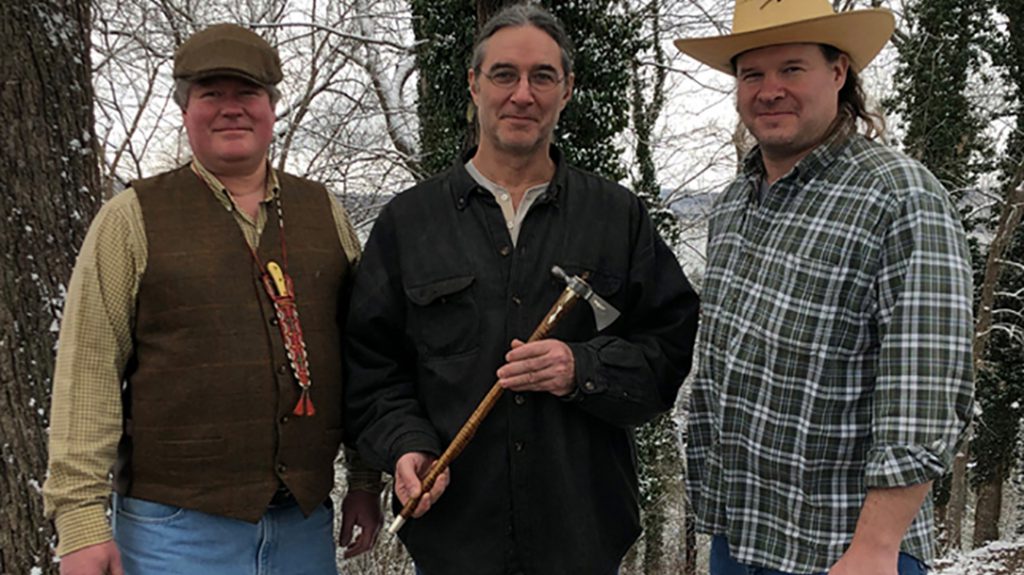
Trading
By treaty, English colonists were forbidden to cross the Proclamation Line and encroach on Indian lands. In fact, they already had, and the treaty did little to stop the colonist settlers, hunters, or explorers from going into the wilderness in ever-increasing numbers. Land speculation was rampant, even without legal claims recognized by the colonial and later state governments.
Adventurers and wealthy colonists, royal government officials among them, were making deals of their own with the natives. For the most part, the Indian tribes were willing to barter land for trade goods. They were shrewder at business than given credit for. They drove hard bargains and in some cases trading land they had neither de jure nor de facto title to. Once a deal was cut, the new owners could expect a fight from tribes who also laid claim to the land or disagreed with its sale.
A Modern Beauty of a Pipe Tomahawk
Kentucky-based artist Simeon England conceived the idea of creating a typical, late colonial era presentation-grade tomahawk for a CLA fundraising auction. He convinced his CLA artist peers Kyle Willyard and Mike Miller to join the endeavor. In terms of labor, the three collectively put about 80 hours of work into it. Had they made it in 1765, it would have taken no less time. Tomahawks like this were expensive items.
About four years prior to the project, England began a detailed historic study of tomahawks. He specializes in building period-correct pieces beginning with hand-forging the iron heads. Like many originals, this pipe tomahawk’s head began as a 4-inch long scrap of a muzzle-loading rifle barrel. England hand forged it into shape, adding a hard-steel cutting edge. Then he spent as much time again whitesmithing it to a smooth, bright surface finish.
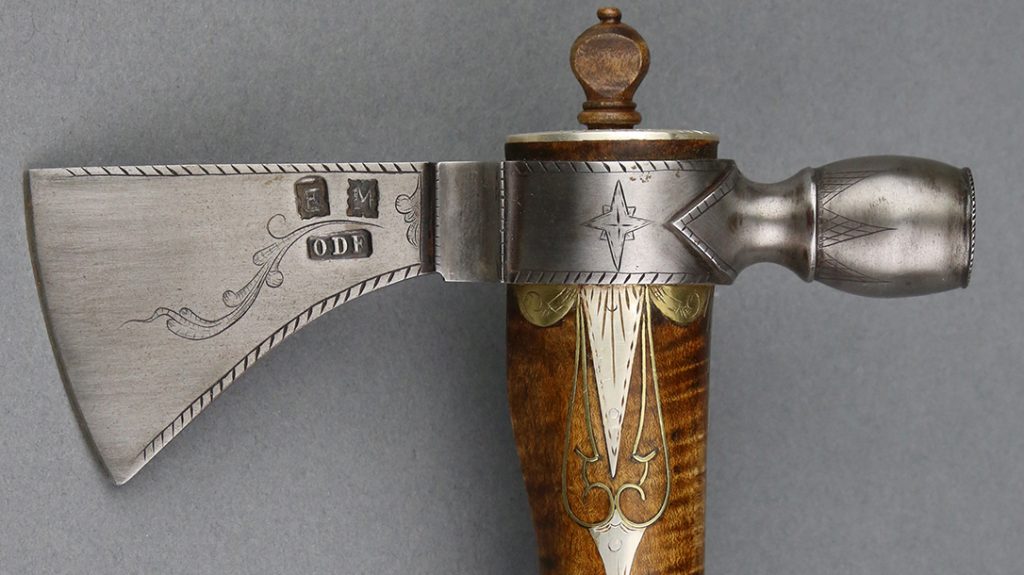
Engraving and More
Kyle Willyard did the decorative work; he’s a specialist in making edged tools, especially knives and cutlery. He came up with the engraving pattern based on original designs. Willyard hand-cut every line with a traditional square chisel and hammer. He also designed the metal inlay. The scalping knife inlay on the blade was very common on period examples, second only to the crescent moon. The inlay is meticulously, mechanically applied by cutting a cavity in the metal with a horizontal “V” groove along the edge. The inlay, be it wire or a shape, is attached by tucking the inlay edges into the groove and hammering the groove edges down to anchor the inlay in place.
Mike Miller, who specializes in gun-making, designed and built the entire handle. He used gunstock curly maple for the haft with brass and silver for the decorative metal inlay. Lastly was the mouthpiece and clean-out cap, which also got a silver finish. He also did the engraving on the latter parts. Just like traditional American craftsmen, melted coins were his source for the decorative silver. Factor in the history and this pipe tomahawk is truly one-of-a-kind.
This story first ran in Ballistic Magazine on November 16, 2020.
Read Next: From Battle To Field: 5 Popular Military Knives That Are Also Great Hunting Knives

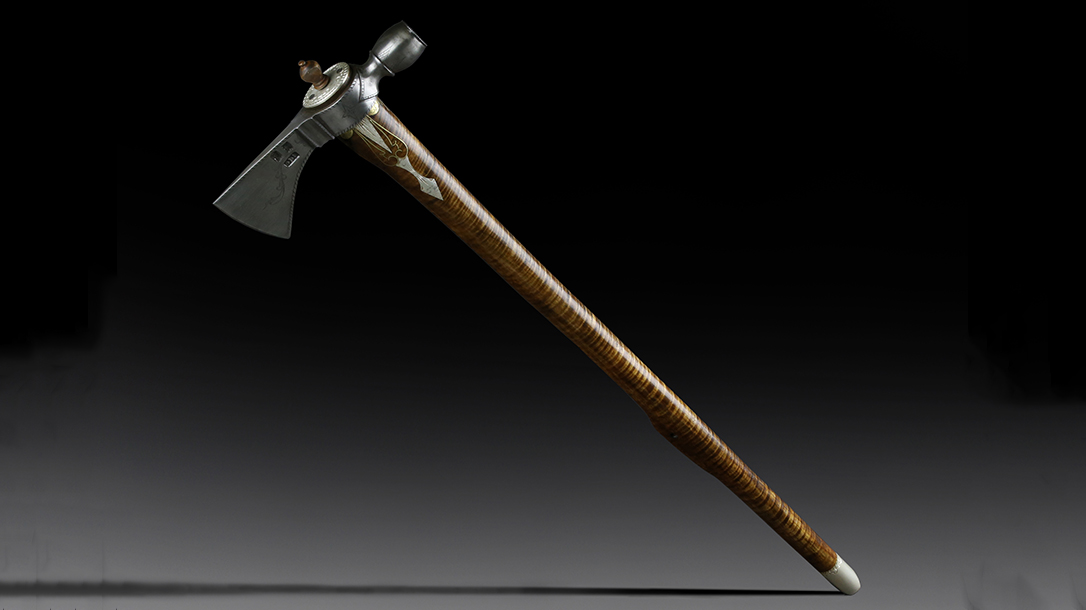


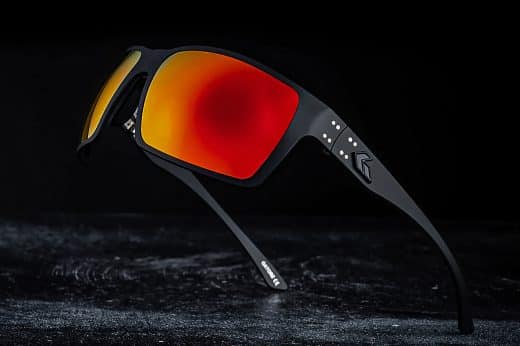


Comments